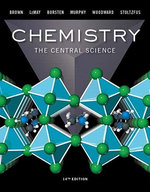?From examination of the molecular models i–v, choose the substance that (a) can be hydrolyzed to form a solution containing glucose,
Chapter 24, Problem 24.6(choose chapter or problem)
From examination of the molecular models i–v, choose the substance that
(a) can be hydrolyzed to form a solution containing glucose,
(b) is capable of forming a zwitterion,
(c) is one of the four bases present in DNA,
(d) reacts with an acid to form an ester,
(e) is a lipid. [Sections 24.6–24.10]
Unfortunately, we don't have that question answered yet. But you can get it answered in just 5 hours by Logging in or Becoming a subscriber.
Becoming a subscriber
Or look for another answer
